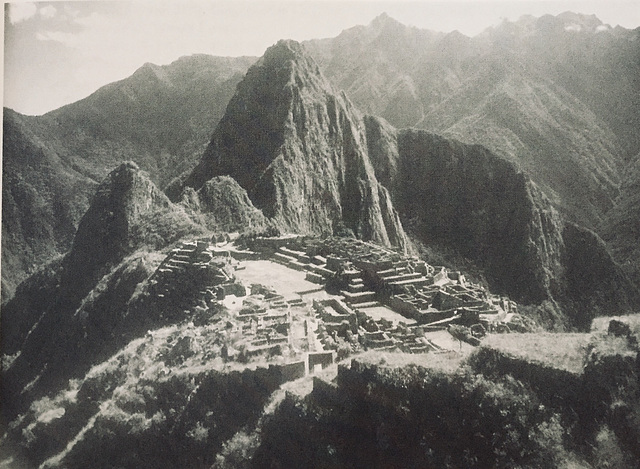Summer morning
Dragon fly - how do they see the world
White skipper
Window
A picture
Meadow
Mess
Music
Music
Young or Old
Sky
Das Ding an sich / "A priori"
Towards FUTURE
Aubade
A Light House
The Unconscious.....
Buddha
Jack fruit plantling
A raft
Coffee
Flower of Zucchini
OK / Okay
Only the Wind
Words
Noah Webster
Squanto
Philip Sidney
WILLIAM TINDALL
Written in Stone
Inca Empire
See also...
Keywords
Authorizations, license
-
Visible by: Everyone -
All rights reserved
-
21 visits
Photo by Dinesh


- Keyboard shortcuts:
Jump to top
RSS feed- Latest comments - Subscribe to the comment feeds of this photo
- ipernity © 2007-2024
- Help & Contact
|
Club news
|
About ipernity
|
History |
ipernity Club & Prices |
Guide of good conduct
Donate | Group guidelines | Privacy policy | Terms of use | Statutes | In memoria -
Facebook
Twitter

Terracing served number of functions. It created new lands for agriculture, stablized step slopes and prevented erosion, and provided level ground on which to build. The Incas were not content, however, to simply make utilitarian terraces. Many of them most impressive terraced sites are works of land-scape architecture famous throughout the world. Sites such as royal estates of Machu Pichu, Chinchero, Pisac, and Ollantaytambo were all built on terraces, some of which seem to cling to impossibly steep hill sides. Cuzco itself and almost all major highland sites were heavily terraced, and some sites such as Zmarupata in the valley of Cuzco and Inti Pata near Machin Pichu consisted solely on elaborate terrace works. ~ Page 123
Among the Spaniards was a young captain from Segovia named Jeronimo de Aliaga. To de Aliaga, Peru was as weird as it was wonderful. He marveled at the scale and sophistication of Inca architecture, not least the huge northern wall of the Sacsayhuaman fortress at their capital, Cuzco, with its perfectly interlocking 200-ton stones. Much of what the Spaniards later built at Cuzco they erected on top of Inca walls and foundations, recognizing their extraordinary, earthquake-resistant quality. Today we can get a better sense of the pre-Conquest grandeur of the Inca achievement at Machu Picchu – the legendary ‘lost city of the Incas’, which seems to float amid the clouds of the Andes, a city the Spaniards never found and so never despoiled and rebuilt. High above the Urubamba River, Machu Picchu was probably constructed in the mid-fifteenth century. Despite its seemingly impractical location, clinging to steep mountain sides more than 8,000 feet above sea-level, it was clearly a self-sufficient settlement, with running spring water and terrace for cultivation of crops and gazing of livestock. Wholly unknown to the Western world until 1911, when it was found by the American academic and explorer Hiram Bingham, it serves as a warning that no civilization no matter how mighty it may appear to itself, is indestructible. We still do not know what purpose the city served. Nor do we know exactly when and why the Incas abandoned it. One strong possibility is that epidemic disease arrived there from Hispaniola (the island which is today divided between the Dominican Republic and Haiti) ahead of the conquistadors, killing the population and leaving Machu Picchu a ghost town. ~ Page 101 (From "Civilization" ~ Niall Ferguson)
Sign-in to write a comment.